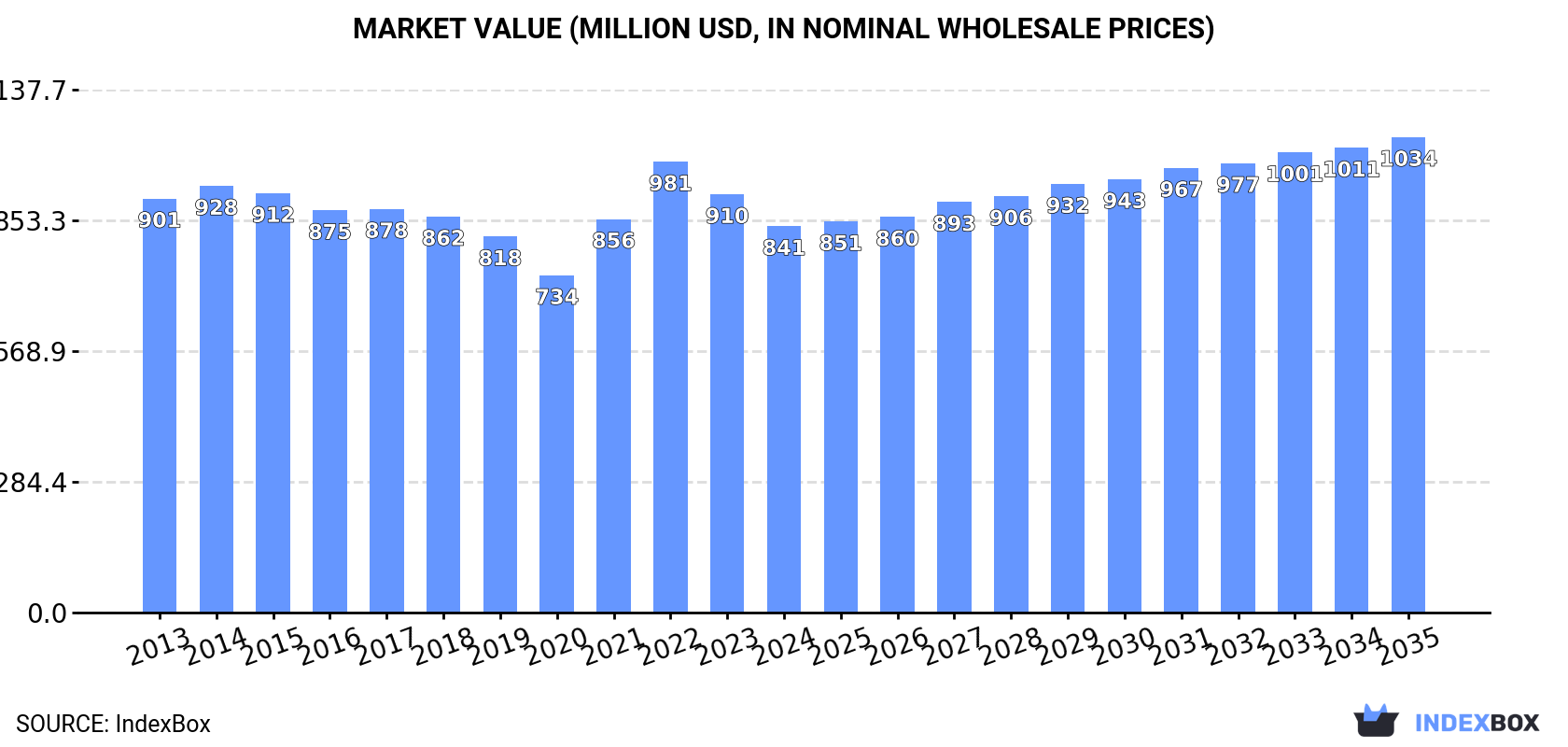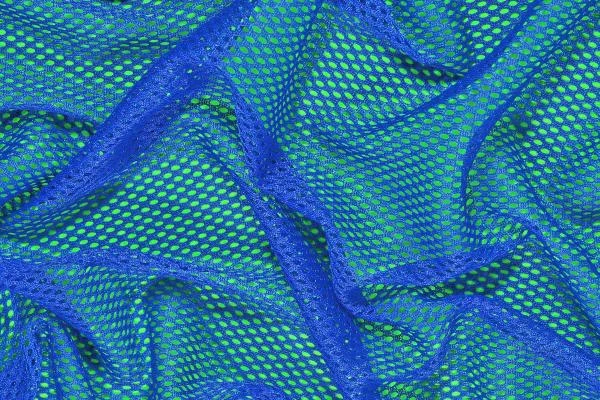Sep 19, 2025
IndexBox has just published a new report: Europe – Blankets And Travelling Rugs Of Synthetic Fibres – Market Analysis, Forecast, Size, Trends And Insights.
This market analysis provides a comprehensive overview of the European market for blankets and travelling rugs made from synthetic fibres. It details that despite a recent contraction in 2024, the market is forecast for steady long-term growth, with volume projected to reach 205 million units and value to hit $1 billion by 2035. The report breaks down consumption patterns by country, identifying Russia, Germany, and France as the largest markets. It also covers production, highlighting Russia’s dominance, and provides extensive data on import and export dynamics, including key trading countries and price trends across Europe.
Key Findings
Market forecast to grow at a CAGR of +1.3% in volume and +1.9% in value from 2024 to 2035Russia, Germany, and France were the top three consuming countries by volume in 2024Russia is also the dominant production hub, accounting for 60% of Europe’s outputImport prices have seen a general declining trend, averaging $4 per unit in 2024Poland recorded the most significant growth in both consumption and import volumes over the past decadeMarket Forecast
Driven by increasing demand for blankets and travelling rugs of synthetic fibres in Europe, the market is expected to continue an upward consumption trend over the next decade. Market performance is forecast to retain its current trend pattern, expanding with an anticipated CAGR of +1.3% for the period from 2024 to 2035, which is projected to bring the market volume to 205M units by the end of 2035.
In value terms, the market is forecast to increase with an anticipated CAGR of +1.9% for the period from 2024 to 2035, which is projected to bring the market value to $1B (in nominal wholesale prices) by the end of 2035.
 ConsumptionEurope’s Consumption of Blankets And Travelling Rugs Of Synthetic Fibres
ConsumptionEurope’s Consumption of Blankets And Travelling Rugs Of Synthetic Fibres
In 2024, consumption of blankets and travelling rugs of synthetic fibres decreased by -6.1% to 177M units, falling for the second year in a row after three years of growth. The total consumption volume increased at an average annual rate of +1.7% from 2013 to 2024; the trend pattern remained relatively stable, with somewhat noticeable fluctuations being observed in certain years. Over the period under review, consumption hit record highs at 199M units in 2022; however, from 2023 to 2024, consumption remained at a lower figure.
The value of the market for blankets and travelling rugs of synthetic fibres in Europe contracted to $841M in 2024, which is down by -7.6% against the previous year. This figure reflects the total revenues of producers and importers (excluding logistics costs, retail marketing costs, and retailers’ margins, which will be included in the final consumer price). Overall, consumption continues to indicate a relatively flat trend pattern. The level of consumption peaked at $981M in 2022; however, from 2023 to 2024, consumption remained at a lower figure.
Consumption By Country
The countries with the highest volumes of consumption in 2024 were Russia (35M units), Germany (24M units) and France (16M units), together comprising 43% of total consumption. The UK, Poland, the Netherlands, Spain, Italy, Belgium and Romania lagged somewhat behind, together accounting for a further 35%.
From 2013 to 2024, the biggest increases were recorded for Poland (with a CAGR of +10.2%), while consumption for the other leaders experienced more modest paces of growth.
In value terms, Russia ($222M) led the market, alone. The second position in the ranking was held by Germany ($96M). It was followed by France.
From 2013 to 2024, the average annual rate of growth in terms of value in Russia totaled -2.4%. The remaining consuming countries recorded the following average annual rates of market growth: Germany (-1.0% per year) and France (+2.0% per year).
The countries with the highest levels of travelling rugs of synthetic fibre per capita consumption in 2024 were Belgium (597 units per 1000 persons), the Netherlands (557 units per 1000 persons) and Germany (296 units per 1000 persons).
From 2013 to 2024, the most notable rate of growth in terms of consumption, amongst the key consuming countries, was attained by Poland (with a CAGR of +10.3%), while consumption for the other leaders experienced more modest paces of growth.
ProductionEurope’s Production of Blankets And Travelling Rugs Of Synthetic Fibres
In 2024, approx. 42M units of blankets and travelling rugs of synthetic fibres were produced in Europe; remaining stable against 2023. Overall, production saw a relatively flat trend pattern. The pace of growth appeared the most rapid in 2015 with an increase of 29%. As a result, production reached the peak volume of 45M units. From 2016 to 2024, production growth remained at a lower figure.
In value terms, travelling rugs of synthetic fibre production fell to $291M in 2024 estimated in export price. In general, production, however, showed a mild slump. The pace of growth was the most pronounced in 2015 when the production volume increased by 28%. As a result, production reached the peak level of $362M. From 2016 to 2024, production growth remained at a somewhat lower figure.
Production By Country
The country with the largest volume of travelling rugs of synthetic fibre production was Russia (25M units), accounting for 60% of total volume. Moreover, travelling rugs of synthetic fibre production in Russia exceeded the figures recorded by the second-largest producer, Estonia (3.7M units), sevenfold. Belgium (3M units) ranked third in terms of total production with a 7% share.
From 2013 to 2024, the average annual rate of growth in terms of volume in Russia stood at +2.6%. In the other countries, the average annual rates were as follows: Estonia (-4.8% per year) and Belgium (+47.3% per year).
ImportsEurope’s Imports of Blankets And Travelling Rugs Of Synthetic Fibres
In 2024, supplies from abroad of blankets and travelling rugs of synthetic fibres decreased by -12.9% to 172M units, falling for the second consecutive year after three years of growth. Total imports indicated a noticeable increase from 2013 to 2024: its volume increased at an average annual rate of +2.5% over the last eleven years. The trend pattern, however, indicated some noticeable fluctuations being recorded throughout the analyzed period. Based on 2024 figures, imports decreased by -21.5% against 2022 indices. The pace of growth appeared the most rapid in 2020 when imports increased by 24% against the previous year. The volume of import peaked at 219M units in 2022; however, from 2023 to 2024, imports stood at a somewhat lower figure.
In value terms, travelling rugs of synthetic fibre imports contracted sharply to $688M in 2024. Over the period under review, imports saw a relatively flat trend pattern. The most prominent rate of growth was recorded in 2021 when imports increased by 33% against the previous year. The level of import peaked at $966M in 2022; however, from 2023 to 2024, imports failed to regain momentum.
Imports By Country
In 2024, Germany (31M units), distantly followed by France (17M units), the Netherlands (16M units), Poland (15M units), the UK (13M units), Spain (11M units), Russia (9.9M units), Italy (8.6M units) and Belgium (7.9M units) represented the key importers of blankets and travelling rugs of synthetic fibres, together constituting 75% of total imports. Sweden (4.8M units) followed a long way behind the leaders.
From 2013 to 2024, the biggest increases were recorded for Poland (with a CAGR of +11.0%), while purchases for the other leaders experienced more modest paces of growth.
In value terms, Germany ($103M), France ($71M) and the UK ($70M) appeared to be the countries with the highest levels of imports in 2024, together comprising 36% of total imports. The Netherlands, Poland, Russia, Spain, Italy, Belgium and Sweden lagged somewhat behind, together accounting for a further 40%.
In terms of the main importing countries, Poland, with a CAGR of +7.2%, saw the highest rates of growth with regard to the value of imports, over the period under review, while purchases for the other leaders experienced more modest paces of growth.
Import Prices By Country
In 2024, the import price in Europe amounted to $4 per unit, waning by -3.7% against the previous year. Over the period under review, the import price continues to indicate a noticeable reduction. The most prominent rate of growth was recorded in 2021 when the import price increased by 15%. Over the period under review, import prices hit record highs at $5.7 per unit in 2013; however, from 2014 to 2024, import prices stood at a somewhat lower figure.
There were significant differences in the average prices amongst the major importing countries. In 2024, amid the top importers, the country with the highest price was the UK ($5.6 per unit), while Poland ($3.1 per unit) was amongst the lowest.
From 2013 to 2024, the most notable rate of growth in terms of prices was attained by the UK (-0.9%), while the other leaders experienced a decline in the import price figures.
ExportsEurope’s Exports of Blankets And Travelling Rugs Of Synthetic Fibres
In 2024, overseas shipments of blankets and travelling rugs of synthetic fibres decreased by -27.1% to 37M units, falling for the third consecutive year after five years of growth. Overall, exports, however, showed a measured increase. The most prominent rate of growth was recorded in 2020 when exports increased by 46% against the previous year. Over the period under review, the exports hit record highs at 65M units in 2021; however, from 2022 to 2024, the exports remained at a lower figure.
In value terms, travelling rugs of synthetic fibre exports reduced dramatically to $205M in 2024. Over the period under review, exports, however, continue to indicate a relatively flat trend pattern. The pace of growth appeared the most rapid in 2021 with an increase of 24%. The level of export peaked at $329M in 2022; however, from 2023 to 2024, the exports remained at a lower figure.
Exports By Country
The shipments of the six major exporters of blankets and travelling rugs of synthetic fibres, namely Germany, the Netherlands, Poland, Belgium, Spain and Hungary, represented more than two-thirds of total export. The following exporters – Slovenia (1.6M units), Slovakia (1.2M units), France (1M units) and Sweden (1M units) – together made up 13% of total exports.
From 2013 to 2024, the biggest increases were recorded for Slovenia (with a CAGR of +53.9%), while shipments for the other leaders experienced more modest paces of growth.
In value terms, the Netherlands ($40M), Germany ($35M) and Spain ($24M) were the countries with the highest levels of exports in 2024, with a combined 48% share of total exports. Poland, Belgium, Hungary, Slovenia, France, Sweden and Slovakia lagged somewhat behind, together comprising a further 34%.
In terms of the main exporting countries, Slovenia, with a CAGR of +41.1%, recorded the highest growth rate of the value of exports, over the period under review, while shipments for the other leaders experienced more modest paces of growth.
Export Prices By Country
The export price in Europe stood at $5.5 per unit in 2024, which is down by -5.3% against the previous year. Over the period under review, the export price continues to indicate a pronounced setback. The growth pace was the most rapid in 2023 an increase of 14%. Over the period under review, the export prices attained the maximum at $8.3 per unit in 2013; however, from 2014 to 2024, the export prices remained at a lower figure.
There were significant differences in the average prices amongst the major exporting countries. In 2024, amid the top suppliers, the country with the highest price was Spain ($7.7 per unit), while Slovakia ($3.3 per unit) was amongst the lowest.
From 2013 to 2024, the most notable rate of growth in terms of prices was attained by Slovakia (+6.8%), while the other leaders experienced mixed trends in the export price figures.
